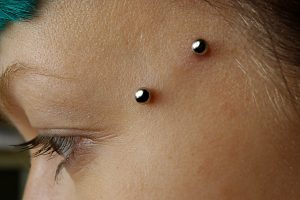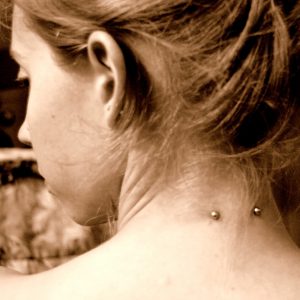What Are Piercing Rejections?
As much as we may love piercings, both the aesthetics and (yes) the process, our bodies still perceive the new foreign objects as little alien invaders. As such, in our best interest, they launch an immune response that can sometimes be successful enough to actually force the piercing back towards the surface of the skin. Eventually, it can be pushed so far that the skin will open (not quite parting like the Red Sea, but still a pretty epic function) and it will, well, pop out.

This is called rejection. Piercing rejections are not entirely uncommon, albeit not as frequent as potential and pesky infections.
Knowing the signs of a piercing rejection so that you can spot it early is crucial to prevent it from creating discomfort and potentially even scarring of the skin.
Keep an eye out for migration
First of all, it should go without saying that in order to reduce the risk of rejection, you should always look for and go to a reputable and qualified piercer. Furthermore, make sure to use proper jewellery (titanium seems to be better for people with more sensitive skin and can reduce the likelihood of an allergic reaction or rejection) and practice aftercare diligently.
Rejections usually happen gradually, and just as with relationship break-ups, if we look back carefully, we can see how the signs were already there, brewing somewhere just under surface. Symptoms (from the piercing that is) usually begin several weeks or at the very least days before your body actually pushes the jewellery out.
While your piercing is healing, keep an eye out for any signs of what is termed ‘piercing migration’. These include if you can see more of the jewellery outside of the piercing than before, or it starts to become visible under the skin, looks like it is hanging differently or moving more easily than it should (but don’t fiddle about with your new piercing unnecessarily!).
Surface piercings most vulnerable

Any type of piercing can be rejected. However, the most usual suspects of rejection are surface piercings, which is unsurprising given their shallow location under the skin, rather than being attached to cartilage or more fleshy parts as some of their cousins. Your body’s immune system may feel it is easier to simply push the piercing out, rather than lay down new tissue around the wound allowing the piercing to heal.
What to do?
Should your piercing show signs of migration or rejection, remove the jewellery and contact your piercer. Leaving the jewellery in increases the risk of scarring. Scar tissue may or may not be an issue for you aesthetically, but it also prevents re-piercing the same area. Your piercer may suggest using a different shape or size of jewellery, or perhaps one made of non-irritating plastic. If the migration has gone too far, they will tell you what is a good time to wait before re-piercing the same place.
